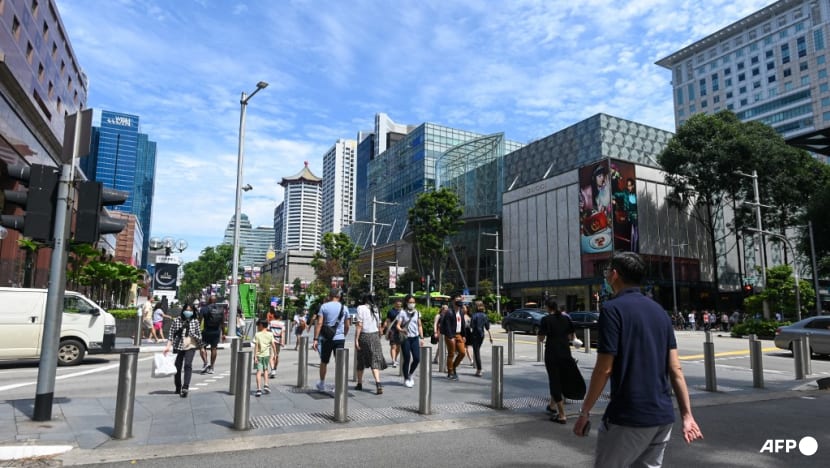Singapore’s core inflation hits four-year low of 0.5% in March

Pedestrians crossing at a traffic junction along the Orchard Road shopping district in Singapore. (Photo: Roslan Rahman/AFP)

This audio is generated by an AI tool.
SINGAPORE: Singapore’s core inflation eased to 0.5 per cent year-on-year in March, down from 0.6 per cent in February, the latest figures from the Monetary Authority of Singapore (MAS) showed on Wednesday (Apr 23).
This is the sixth consecutive drop in the figure and marks a new four-year low on inflation. The last time core inflation was at 0.5 per cent was in March 2021.
On a month-on-month basis, MAS core inflation declined by 0.1 per cent. This is a core inflation measure that excludes accommodation and private transportation. The dip was due to lower inflation across all core Consumer Price Index (CPI) categories, except food.
The CPI is commonly used as a measure of consumer price inflation. It tracks the price changes of a fixed basket of consumption goods and services commonly purchased by the general resident households over time.
CPI-All Items is the highest level indicator of the CPI, comprising food and all categories.
Overall, the CPI-All Items remained unchanged from February at 0.9 per cent year-on-year in March. This was due to the larger increase in the cost of food and private transport being offset by lower inflation in other major categories of the CPI basket such as accommodation.
Month-on-month, CPI-All items also declined by 0.1 per cent.
Listen:
SECTORS
In a press release, MAS and and the Ministry of Trade and Industry (MTI) said that food inflation rose from 1.0 per cent in February to 1.3 per cent in March because the prices of non-cooked food and prepared meals increased.
Private transport inflation also rose, from 1.6 per cent in February to 2.1 per cent in March, due to a larger increase in car prices.
The cost of retail and other goods fell slightly, from -0.4 to -0.5 per cent, as the prices of information and communication equipment and household appliances fell.
Similarly, electricity and gas prices dropped from -3.1 per cent to -3.5 per cent in March.
Accommodation inflation also moderated, from 1.6 per cent in February to 1.4 per cent in March, due to a smaller increase in housing rent.
Services inflation eased from 0.8 per cent in February to 0.6 per cent in March. This was due to a steeper decline in the cost of information and communication services and a modest increase in point-to-point transport fares.
INFLATION OUTLOOK
Both MAS core inflation and CPI-All Items inflation are forecast to average between 0.5 per cent and 1.5 per cent, MAS and MTI said.
Imported inflation is expected to remain moderate due to global demand and ample supply conditions, which are likely to lead to lower crude oil prices as compared to 2024.
Despite the rise of global trade conflicts, their impact on Singapore’s import prices will likely be more than offset by disinflationary pressures due to weaker global demand, MAS added.
"On the domestic front, unit labour costs are projected to rise gradually as nominal wage growth continues to ease even as productivity increases," MAS and MTI said.
"At the same time, enhanced government subsidies for essential services such as public healthcare, pre-school education and public transport will continue to dampen services inflation."
OCBC’s head of global markets research and strategy, Selina Ling, said that the official rhetoric remains “dovish”.
While there is no change to the inflation forecast, the stated inflation risks are tipped to the downside given heightened uncertainties in global trade, she said.
“The possibility of another MAS policy easing is still on the table if the downside inflation risks continue to manifest in the coming months ahead of the remaining two meetings in July and October this year,” she added, referring to the MAS monetary policy meetings.













